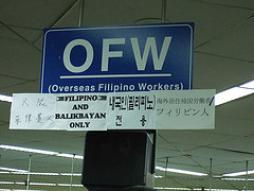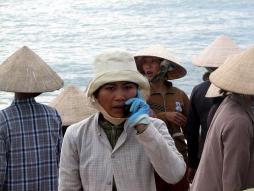Emergency Telecommunications
Posted by on Jan 01, 1970
n/a
Posted by CorinneRamey on Feb 21, 2008
Twitter might tell you what the friend of a friend ate for breakfast or when your cousin is doing his laundry. But, charges Nate Ritter, Twitter is way more than a social networking tool used to communicate the mundane details of everyday life. The mobile phone service has potential -- and in fact, has been used in the past -- for emergency communication and response.
Posted by CorinneRamey on Feb 14, 2008
A single computer, hooked up to a modem in Bobby Soriano's house in the Philippines, receives a steady of stream of text messages begging for help. There have been messages from Philippine seamen, who, after being accused of the murder of a Korean captain, were forced to confess by Omani police. There was a Philippine domestic worker in Lebanon who was forced to flee to the mountains to escape Israeli bombings, and a message from twenty Philippine sailors who were evicted from their ship by police near Denmark. In each of these cases, a single SMS message with the keyword "SOS" was sent to a hotline in the Philippines, activating a network of nonprofits and government agencies to come to the workers' rescue.
Posted by CorinneRamey on Feb 11, 2008
Claire Joyce Tempongko, a Filipina immigrant, was murdered by her ex-boyfriend in front of her two young children five years ago. Tempongko had repeatedly tried to get help from state services -- she had called the police before, and her ex-boyfriend had been in jail for domestic violence -- but she was murdered despite the involvement of various services.
Immigrants like Tempongko repeatedly face language and cultural barriers to getting help from domestic abuse. Tempongko's murder was one of the factors that eventually led to a new translation program which was recently implemented by the city of San Francisco in California in the western United States. The new program brings translation services to non-English speaking victims of domestic violence in over 170 languages, all via mobile phone.
Jill Tregor, a Senior Policy Analyst with the San Francisco Department on the Status of Women, sat down with MobileActive for an interview.
Posted by KatrinVerclas on Jan 29, 2008
We are occasionally commissioned to write introductory articles about the mobile revolution and implications for NGOs for various publications. Here is one broad overview of some areas where mobiles are deployed in civil society.
Cellphones have become the most ubiquitous communication device in the hands of human beings. There are an estimated 3.5 billion mobile phones in use and there is coverage in even remote corners of the world. Cellphones have revolutionized not just the way we work and organize within cultures and societies, but have the potential to change how NGOs (non-governmental organizatios) operate.
Mobile phones are already experimentally used in multiple ways by NGOs. We at MobileActive.org have been tracking how organizations in areas such as health and disease prevention, economic development, humanitarian relief, democratic participation, and advocacy are using mobile phones to make their work more effective and efficient.
Following are a few examples of what we have seen and where we think mobile phones have potential to be used more strategically by NGOs.




